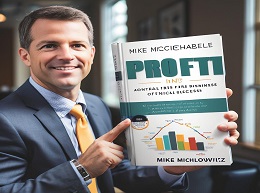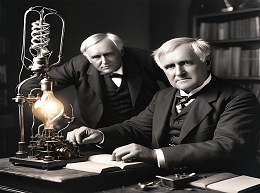The Wide Lens: What Successful Innovators See That Others Miss

Seeing the Bigger Picture: A Comprehensive Review of Ron Adner’s "The Wide Lens"
In "The Wide Lens: What Successful Innovators See That Others Miss," Ron Adner provides a groundbreaking perspective on innovation that goes beyond the conventional focus on products and services. Adner argues that the success of innovation hinges not only on the quality of the innovation itself but also on the broader ecosystem in which it operates. This review delves into the key concepts of the book, offering detailed insights and examples to engage readers and highlight the practical implications of Adner’s framework.
The Wide Lens Approach
Adner’s central thesis is that innovators often fail not because their ideas are flawed, but because they do not adequately account for the broader ecosystem necessary to support their innovations. He introduces the concept of the "wide lens" as a way to understand and manage the interdependencies that can make or break an innovation.
Innovation Ecosystem
The innovation ecosystem includes all the external factors that influence the success of an innovation, such as suppliers, partners, customers, and complementary innovations. Adner emphasizes the importance of understanding these interdependencies and planning for them from the outset.
Example: The development of the electric vehicle (EV) by Tesla illustrates the importance of the innovation ecosystem. Tesla’s success was not just about creating a high-performance electric car but also about addressing the ecosystem elements such as charging infrastructure, battery technology, and regulatory support. By investing in a network of Supercharger stations and securing battery supply partnerships, Tesla managed to overcome many of the ecosystem challenges that have hindered other EV manufacturers.
The Key Principles of the Wide Lens
Adner identifies several key principles that innovators should consider to navigate their ecosystems effectively. These principles help in identifying potential bottlenecks and opportunities for collaboration.
Co-Innovation Risk
Co-innovation risk arises when the success of an innovation depends on the successful development and integration of other innovations. Adner stresses the importance of recognizing and managing these risks.
Example: The launch of HDTVs faced significant co-innovation risks, as their success depended on broadcasters providing HD content and consumers having the necessary infrastructure to support HD viewing. Manufacturers who anticipated and addressed these co-innovation risks were more successful in the market.
Adoption Chain Risk
Adoption chain risk refers to the challenges in ensuring that all parties in the value chain adopt the innovation. This includes suppliers, distributors, and end-users. Adner highlights the need for innovators to engage with all stakeholders to facilitate adoption.
Example: The success of Apple's iPhone was not only due to its innovative design and functionality but also to Apple’s ability to convince telecom carriers to support the device, app developers to create a robust ecosystem of applications, and consumers to adopt the new technology.
Strategic Implications and Actions
Adner provides actionable strategies for innovators to manage these risks and leverage their ecosystems effectively. He advocates for a comprehensive approach that includes ecosystem mapping, stakeholder alignment, and continuous adaptation.
Ecosystem Mapping
Ecosystem mapping involves identifying all the critical interdependencies and stakeholders involved in the innovation process. This helps in understanding the broader landscape and planning for potential challenges.
Example: In the pharmaceutical industry, bringing a new drug to market involves navigating a complex ecosystem of regulators, healthcare providers, insurers, and patients. Companies that map this ecosystem thoroughly can identify key leverage points and potential barriers to adoption.
Stakeholder Alignment
Aligning stakeholders involves ensuring that all parties in the ecosystem are committed to the innovation and have their interests aligned. This may involve negotiating partnerships, securing commitments, and aligning incentives.
Example: The rollout of 5G technology requires alignment among telecom companies, device manufacturers, government regulators, and consumers. Successful alignment has enabled smoother transitions and quicker adoption of 5G services in regions where stakeholders' interests are harmonized.
Continuous Adaptation
Continuous adaptation is crucial for responding to changes in the ecosystem and addressing unforeseen challenges. Adner emphasizes the need for flexibility and ongoing engagement with stakeholders.
Example: Netflix’s transition from DVD rentals to streaming services required continuous adaptation to changing consumer preferences, technological advancements, and competitive pressures. Netflix’s ability to pivot and adapt its business model has been key to its sustained success.
Real-World Case Studies
Adner’s book is rich with real-world case studies that illustrate the principles of the wide lens approach. These case studies provide concrete examples of how successful innovators have navigated their ecosystems.
Case Study: Toyota Prius
The development and launch of the Toyota Prius hybrid car is a compelling example of the wide lens approach. Toyota recognized early on that the success of the Prius depended not only on the car itself but also on the availability of hybrid components, consumer acceptance, and regulatory support. By addressing these ecosystem elements, Toyota was able to create a successful and sustainable product.
Case Study: Corning’s Gorilla Glass
Corning’s Gorilla Glass, used in smartphones and tablets, is another example. The success of Gorilla Glass depended on collaboration with device manufacturers, integration into product designs, and convincing consumers of its value. Corning’s proactive engagement with ecosystem stakeholders was crucial in making Gorilla Glass a standard in the industry.
Embracing the Wide Lens
"The Wide Lens: What Successful Innovators See That Others Miss" by Ron Adner offers a transformative perspective on innovation. By shifting the focus from the innovation itself to the broader ecosystem, Adner provides a framework that can help innovators navigate the complexities of today’s interconnected world.
The wide lens approach emphasizes the importance of understanding and managing interdependencies, aligning stakeholders, and continuously adapting to changes in the ecosystem. Through real-world examples and actionable strategies, Adner equips readers with the tools to see beyond the immediate scope of their innovations and plan for long-term success.
For anyone involved in innovation whether entrepreneurs, business leaders, or policymakers "The Wide Lens" is an essential read. It challenges conventional thinking and provides a roadmap for achieving success in an increasingly complex and interconnected world. By adopting the wide lens perspective, innovators can better anticipate challenges, leverage opportunities, and create value that resonates across their ecosystems.













